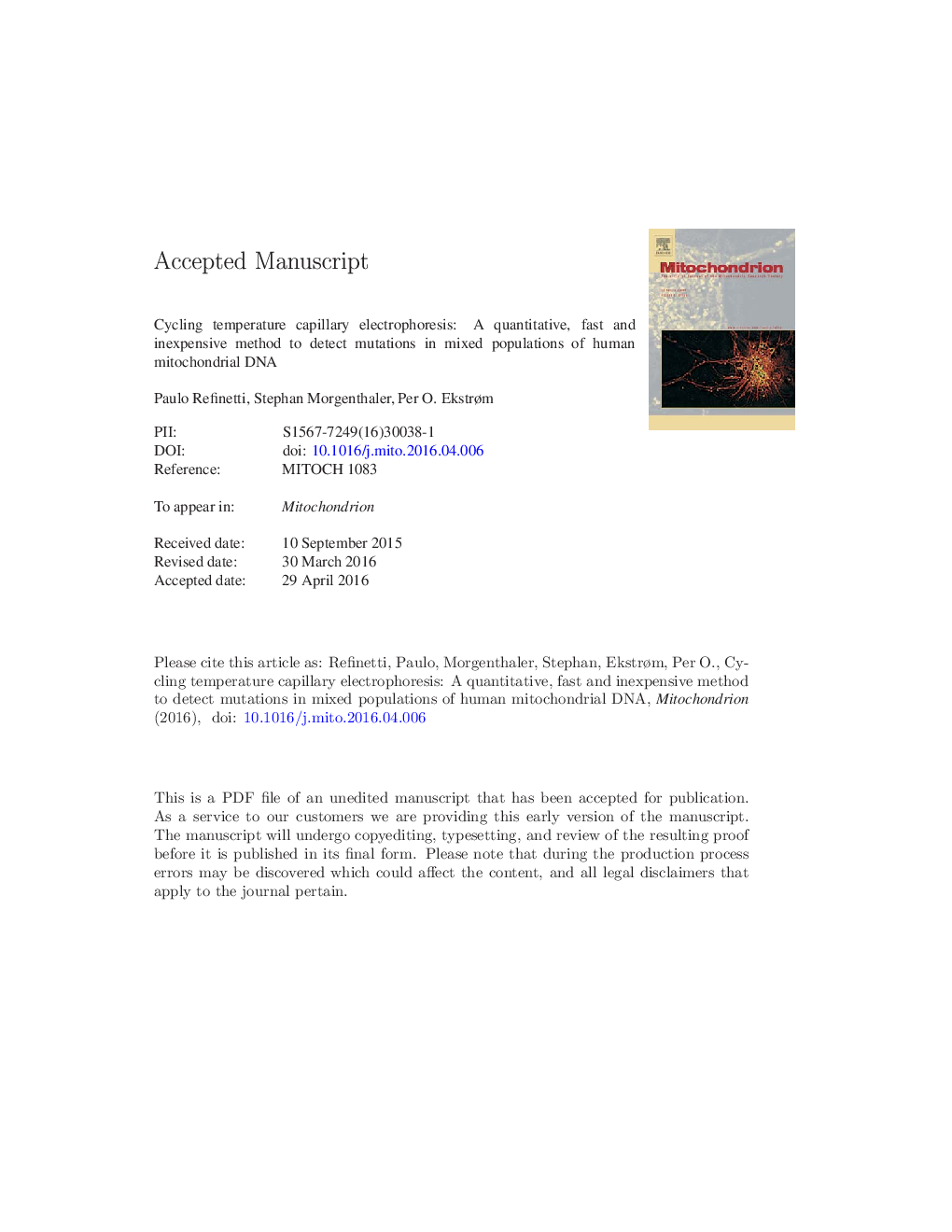| Article ID | Journal | Published Year | Pages | File Type |
|---|---|---|---|---|
| 8399063 | Mitochondrion | 2016 | 26 Pages |
Abstract
Cycling temperature capillary electrophoresis has been optimised for mutation detection in 76% of the mitochondrial genome. The method was tested on a mixed sample and compared to mutation detection by next generation sequencing. Out of 152 fragments 90 were concordant, 51 discordant and in 11 were semi-concordant. Dilution experiments show that cycling capillary electrophoresis has a detection limit of 1-3%. The detection limit of routine next generation sequencing was in the ranges of 15 to 30%. Cycling temperature capillary electrophoresis detect and accurate quantify mutations at a fraction of the cost and time required to perform a next generation sequencing analysis.
Related Topics
Life Sciences
Biochemistry, Genetics and Molecular Biology
Biophysics
Authors
Paulo Refinetti, Stephan Morgenthaler, Per O. Ekstrøm,
